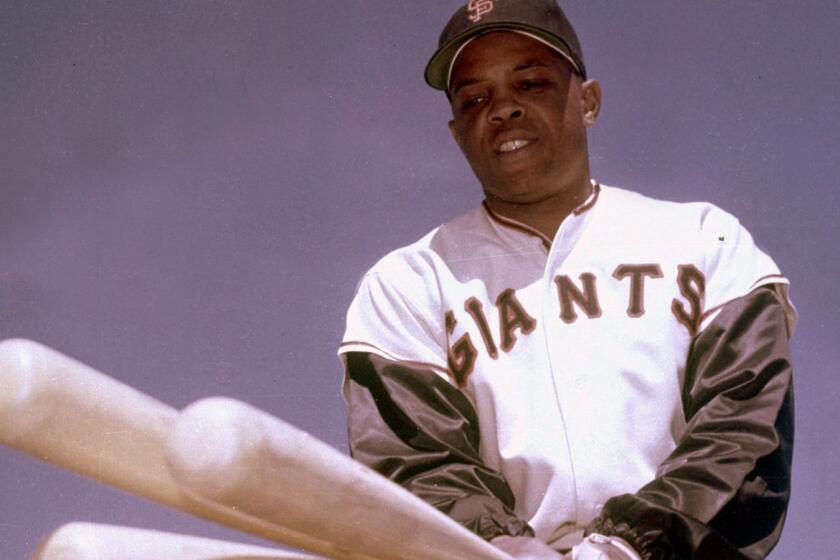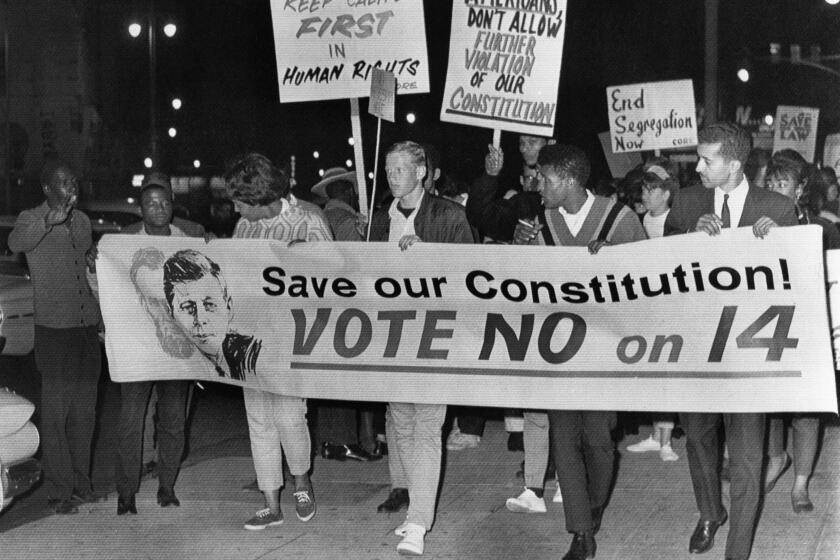Baseball legend Willie Mays instrumental in California fight against housing discrimination
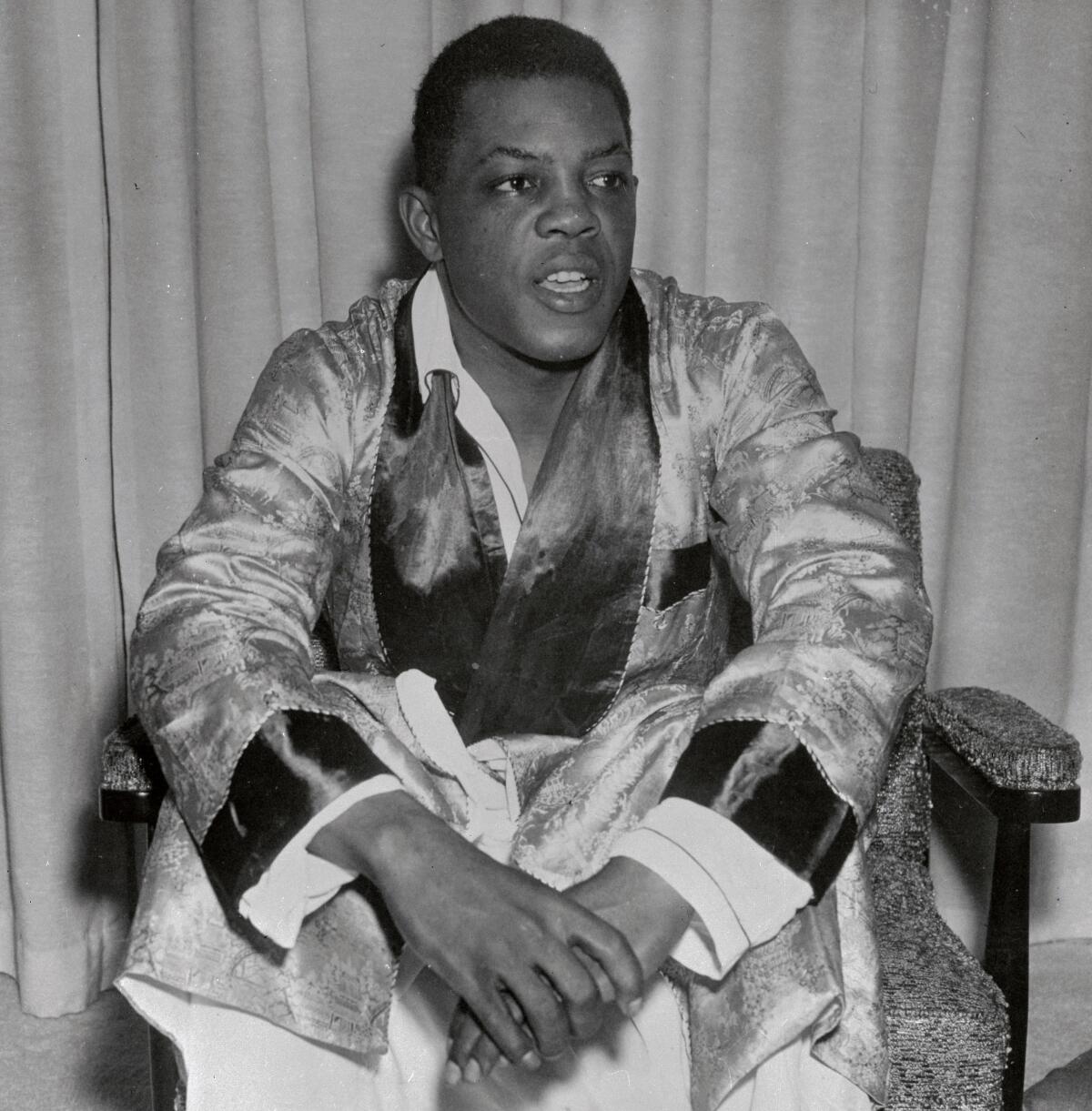
- Share via
SACRAMENTO — As a ballplayer, Willie Mays was arguably the greatest of all time — baseball’s GOAT. But he also starred in another endeavor — as an important California civil rights pioneer.
Mays never wanted to be an activist about anything off the baseball diamond. But the racism he encountered after moving to San Francisco stirred others to leap to his cause and ultimately helped motivate the city and state governments to outlaw housing discrimination.
His role began when Mays arrived in San Francisco from New York with the Giants baseball team in late 1957. Local folks in supposedly enlightened San Francisco welcomed the star outfielder by trying to bar him from a white neighborhood.
Mays downplayed it publicly, but his wife, Marghuerite Mays, spoke out to reporters: “Down in Alabama where we come from, you know your place. But up here, it’s all a lot of camouflage. They grin in your face and deceive you.”
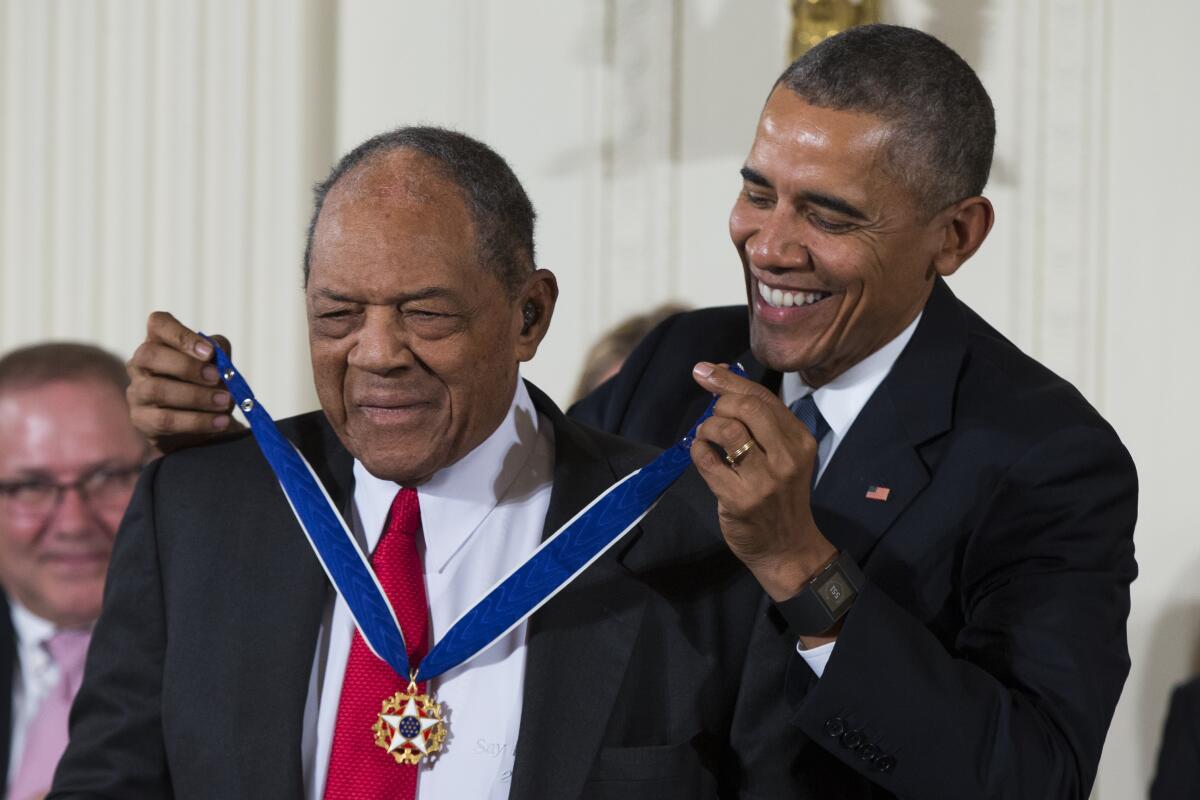
Never mind that Mays was en route to the baseball Hall of Fame as the best all-around ballplayer in history. Didn’t matter. If a Black man was allowed to buy a home in a desirable neighborhood — adjoining tony St. Francis Wood in the Sunset District — nearby property values would tumble. At least that’s what white neighbors openly feared.
“I happen to have a few pieces of property in the area, and I stand to lose a lot if colored people move in,” a nearby home builder told reporters.
Yes, that was San Francisco — in fact, virtually all of California — until laws were passed in the 1960s to stop such discrimination. The change was aided significantly by Mays’ indirect help, according to another legendary Willie from San Francisco — former mayor and longtime state Assembly Speaker Willie Brown.
I called Brown, 90, after Mays died this week at age 93. Brown, a rare Black lawyer in late 1950s San Francisco, struck up an early friendship with Mays.
“He was a joy, frankly. A fun guy,” Brown says.
Willie Mays, widely regarded as the finest player in Major League Baseball history, died Tuesday afternoon, the San Francisco Giants announced.
Brown credits the racial bias against Mays with galvanizing the city into adopting an ordinance forbidding housing discrimination.
“It started with Willie Mays,” Brown told me. “As a result of his being rejected, newspapers suddenly became aware of the racism in San Francisco.
“San Francisco wasn’t racist like other parts of the country. People smiled.”
Brown continued: “The fair housing law of San Francisco was passed because Mays got denied the right of housing. That escalated the need to change. He was the most dramatic example of how discrimination was practiced on people of color.”
In 1963, spurred by Gov. Pat Brown and Bay Area lawmakers, the state Legislature passed a bill outlawing racial discrimination in the sale and rental of housing. It needed all the support it could muster and generated the biggest, bitterest political brawl I’ve ever witnessed in Sacramento.
California voters overwhelmingly repealed the law the next year. But the repeal was declared unconstitutional by both the state and U.S. supreme courts.
Mays didn’t participate personally in that fight, but Brown certainly did.
A transplant from Jim Crow east Texas, Brown became a civil rights activist in San Francisco about the time Mays was arriving from New York. In fact, Brown was persistently snubbed by real estate agents when he tried to buy a house in 1961. He responded by leading a sit-in at a Realtor’s office.
The Mays incident occurred after he offered the asking price of $37,500 for a three-bedroom home in an upscale, tree-lined, all-white neighborhood. After he waited several days, his offer was turned down. The house remained on the market for the same price — but unavailable for the star ballplayer.
Skelton: How a racist housing policy caused the biggest, bitterest brawl in California’s Capitol
The Rumford Fair Housing Act, the 1960s legislation to end racial discrimination on housing, produced arguably the biggest, bitterest brawl ever in California’s Capitol.
The San Francisco Chronicle got wind of the rejection and ran this banner at the top of Page 1: “WILLIE MAYS IS DENIED S.F. HOUSE–RACE ISSUE.”
“I didn’t figure I would have this much trouble trying to buy a place,” Mays told a TV reporter. “When I go looking for a house, I don’t worry about who’s living beside me.”
Unlike nervous white people of that era.
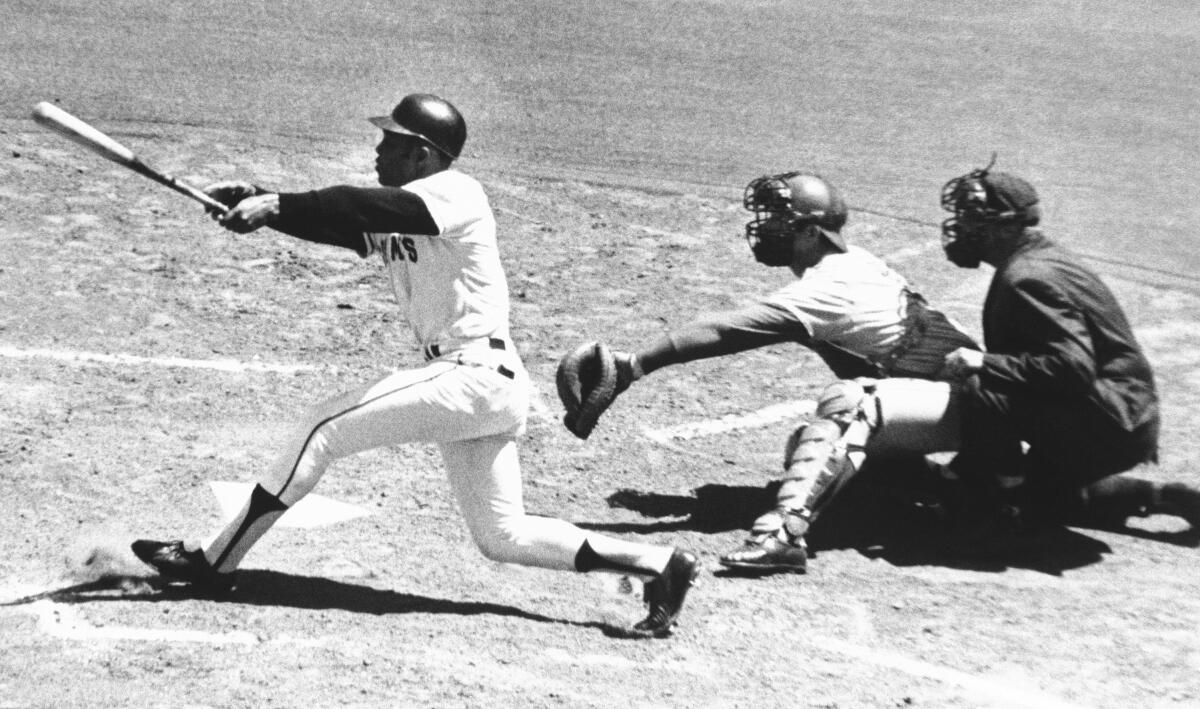
San Francisco Mayor George Christopher — a moderate Republican, back when such a breed existed — offered to let Mays and his wife live temporarily at his home.
Ultimately, the homeowner backed down, despite being berated by neighbors. Mays moved in. And almost immediately someone threw a brick through a window.
Mays kept his mind on baseball and eventually became the pride of San Francisco.
As a bottom-tier sportswriter for United Press International, I was privileged to watch lots of Giants games at windy Candlestick Park in the early 1960s.
Mays’ statistics are phenomenal: a .301 career batting average, 660 home runs, 3,293 hits, 339 stolen bases, 12 Gold Glove awards in center field, 24 All-Star Games.
In the 1961 All-Star Game at Candlestick that I helped cover, Mays doubled home the tying run in the 10th inning and then scored the winning run on a single by Pittsburgh’s Roberto Clemente as the National League edged the American League, 5-4.
But box scores and stats tell only part of the story of Mays’ greatness.
What I remember most about him was his playing with elation and exuberance — galloping around first base, always a threat to stretch a single into a double and a menace to steal second in any case. Full speed no matter the score. Cap flying.
In his long post-career, Mays provided a comfortable nostalgic link back to baseball’s exciting heyday — before blah analytics and emphasis on astronomical free agent salaries.
America can’t afford to lose such people. He didn’t hate. He brought cheer.
And — while there are no stats on it — he assisted in beating housing discrimination.
More to Read
Sign up for Essential California
The most important California stories and recommendations in your inbox every morning.
You may occasionally receive promotional content from the Los Angeles Times.
